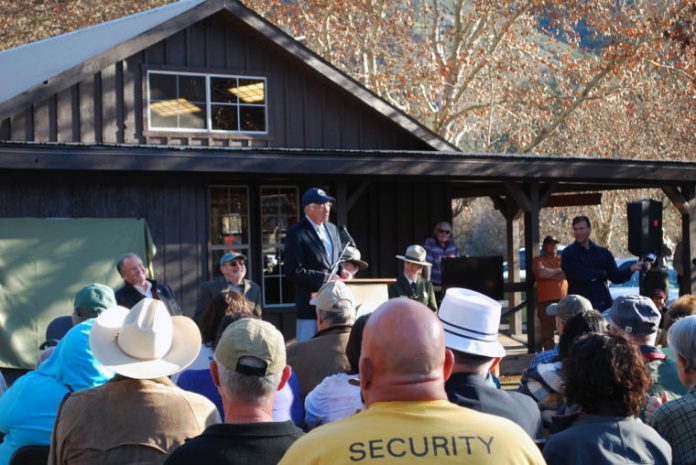
Editor’s note: This is part of the annual Pride section. This year’s theme is “Made in Hollister”.
Pinnacles National Park, upgraded from national monument status by an act of the United States Congress late last year, has a bright future as local communities clamor to bring in more visitors to San Benito County, with efforts focused on boosting the local economy.
Although the area just recently received its national park status, the region has a long history dating back to the early formation of its unique landscape more than 600 million years ago.
In February, more than 600 people gathered at the park to celebrate its redesignation. The event brought in a mix of people who have ties to the park – from the ancestors of homesteaders and Native Americans to environmentalists and outdoor enthusiasts.
“National monuments are usually created in recognition of one significant asset,” said Mark Paxton, the interim director of the Pinnacles Partnership, a nonprofit that supports Pinnacles National Park, which is known for its geology, diverse ecosystem and, of course, its condor recovery program. “It was all about the geology of the place. But since then, there has been a lot of growing awareness of the significant cultural resources.”
In recent years, members of the Amah Mutsun Tribal Band have partnered with park staff members to learn more about the cultural resources in the park, including rare grasslands that were an integral part of basket making for Natives who lived in the south county region before the first homesteaders arrived.
Paxton also noted that the park is home to abundant rare or endangered species, such as the California red-legged frog and the California condor.
“Usually, national parks capture manifold features that are worth preserving,” he said.
At the dedication ceremony Feb. 11, Secretary of the Interior Ken Salazar talked about efforts by the National Park Service to be more inclusive and to recognize the contributions of many residents.
Valentin Lopez, the chairman of the Amah Mutsun Tribal Band, said more than 75 members of the Amah Mutsun Tribal Band and 15 of the Chalone Tribal Band attended the dedication, where Lopez was given a chance to lead visitors in a traditional ceremony.
“It’s recognized as a very special place to the Amah Mutsun for a number of reasons,” he said. “These rock formations are very unique and it is a place of attraction to people.”
He said before European settlers arrived in the region, Pinnacles was a place for prayer for the natives.
The park is also home to a canyon that contains deer grass and white root sage, two materials that were integral in basket making. He recalled bringing members of a statewide basket weavers association to the park and seeing their amazement.
“They could not believe that an area containing the grasses could be that large and could have survived to the present day,” Lopez said.
Lopez said the park is home to other plants that were used for food or medicinal purposes and there are areas that were used as hunting grounds, primarily for the Chalone tribe.
“It was wonderful being asked to participate in that ceremony and the dedication was a wonderful thing,” he said. “It brought recognition to our tribal history and gave respect to all our ancestors who came before us.”
Lopez said one of the challenges now that the park status should bring more visitors to the park is maintaining the balance between sharing the resources and preserving them.
“I hope we will be able to continue the good work we started and to keep that going for many generations to come,” he said.
Lopez described the period after the arrival of Spanish missionaries in 1791 as a “dark” time for the Chalone and Mutsun people. Many of the Native Americans died from disease or were pressured into working at the Soledad mission.
“There were centuries when it was not safe to say you were Indian,” he said. “We worked hard to stay under the radar.”
By the time the first homesteaders arrived near the park, the Native American population was gone. Schuyler Hain was one of the first homesteaders to recognize the potential of Pinnacles. He led tours through Bear Valley and up to the caves for 20 years. He was one of the proponents of naming the location a national monument, an effort that was signed by President Theodore Roosevelt in 1908. Descendants of Hain and other homesteaders also attended the dedication ceremony in February, with a few rows of seats reserved for them in front of the ceremony stage.
Paxton said visitation has been up at the park since its elevation from a monument and said the park status will continue to increase awareness of the many resources available.
“Over time there have been different awarenesses,” he said. “There was a time I recall as a kid when the caves had electric lights and a paved path. Of course, all that is gone. Over time, it’s been really dynamic and changing. Those were the people who were there first who saw there was something to celebrate and preserve.”









